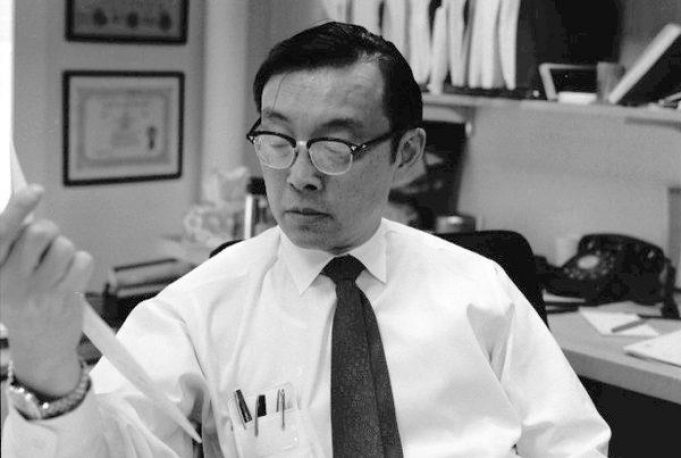
Longtime MIT professor was known for key contributions to aircraft and spacecraft designs.
James W. Mar, a former head of the Department of Aeronautics and Astronautics (AeroAstro), and a chief scientist of the U.S. Air Force, passed away in Seattle, Washington, on March 4. He was 96.
Known for his work on aircraft and spacecraft designs, Mar’s special interests were in the disciplines of structures, aeroelasticity, and materials.
Mar retired as MIT’s Jerome C. Hunsaker Professor of Aerospace Education in July 1990. His MIT career, which spanned 41 years, included a 1981-1983 term as head of AeroAstro, and service as chair of numerous faculty committees including the Committee on Admissions and Financial Aid, Committee on Engineering Education, the Athletic Board, and the Independent Activities Period.
Mar’s research focused on advanced filamentary composite materials and large structures in space. He headed the AeroAstro Division of Structures, Materials, and Aeroelasticity. Mar founded and directed both the Technology Laboratory for Advanced Composites, and, with Professor Rene Miller, the Space Systems Laboratory. Mar was instrumental in creating the Unified Engineering subjects, which formed the foundation of AeroAstro’s undergraduate education.
Following his retirement, Mar remained active in the aerospace field including serving as a member of NASA’s Space Systems and Technology Advisory Committee and of the Air Force Studies Board, and chairing the FAA’s Technical Oversight Group for Aging Aircraft.
Over the years, Mar took on numerous advisory assignments including panels examining development of Air Force and Navy jet engines, and the operation of the Air Force Logistic Command and the Military Airlift Command. Between 1970 and 1972, he took leave from MIT to serve as the U.S. Air Force Chief Scientist. He chaired a committee reporting to the NASA Associate Administrator Office of Space Flight on the design of the graphite/epoxy filament-wound solid rocket motor, and was vice-chairman of the National Academy of Engineering panel that provided oversight of the Space Shuttle’s solid rocket booster redesign following the 1986 Challenger disaster.
Originally from Oakland, California, Mar received his BS, MS, and ScD from MIT, all in civil engineering, in 1941, 1947, and 1949, respectively. Between 1941 and 1944 he was employed by Curtiss-Wright as an aeronautical engineer. He served in the U.S. Navy from 1944 until 1946.
AeroAstro Professor Paul A. Lagace, who began his MIT aeronautical education as one of Mar’s students and eventually became a faculty colleague, said, “Jim Mar was an outstanding person in many ways, making significant contributions to aerospace engineering, to the Institute, and to the aeronautics and astronautics department. But most importantly, he sincerely cared for, and helped, each student with whom he worked. I wouldn’t be where I am today without all he did for, and with, me.”
As an MIT undergraduate in the late 1950s, Institute Professor Sheila Widnall was a Mar advisee. “Jim was a giant in the field. His expertise and his passion really shaped the AeroAstro department,” she said. She recalled a semi-serious hurdle that Mar suggested the department should place before faculty candidates, which became known as the Jim Mar Test. “Jim would say that if an airplane flew over and the candidate didn’t look up, that candidate didn’t belong in our department.”

